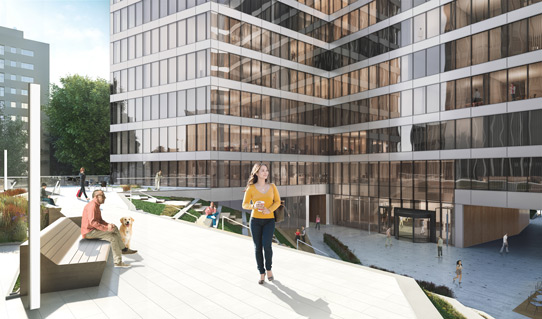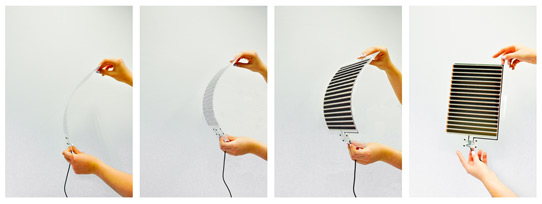- News
17 January 2018
Skanska and Saule apply first perovskite solar cells to office buildings
© Semiconductor Today Magazine / Juno PublishiPicture: Disco’s DAL7440 KABRA laser saw.
Skanska Commercial Development Europe AB - a business unit of building and developer company Skanska Group of Stockholm, Sweden that develops sustainable, energy-independent office projects in Central Eastern Europe - reckons that, using technology provided by Saule Technologies of Warsaw, Poland, it will be the first developer worldwide to cover office buildings with semi-transparent perovskite solar cells on a commercial scale.
Established in 1887, Skanska employs 41,000 in Europe and the USA, working on 10,000 projects. Saule has pioneered the ink-jet printing of flexible, lightweight, semi-transparent perovskite solar modules.
With perovskite technology now ready to be integrated into building façades, Skanska will apply the test cells onto its projects in Poland in 2018. Under a license-based agreement, the developer has exclusive rights to use Saule’s solar cell solutions in building façades and noise barriers across all Skanska markets worldwide (the Nordics, Europe and the USA). Skanska says that perovskite technology offers benefits for the developer, tenants and communities, such as favorable implementation costs, lower energy costs and consumption, and lower carbon footprints.

Picture: Example of Skanska’s office building covered by semi-transparent perovskite solar modules. Perovskites are integrated into the property’s façade without changing its design and esthetics.
Saule has been working on ink-jet printing free-form perovskite solar modules since 2014. This technique allows the shapes and areas covered by each layer to be customized according to requirements. The stability and water resistance of the modules makes them suitable for the construction industry. Saule has conducted research on perovskite applications in solar energy harvesting and optoelectronics with universities in the UK, Israel, Germany, Italy and Spain. With a Japanese investor on board, along with support from the Polish National Centre for Research and Development and several research grants worth more than €20m, Saule is now working on a large-scale, prototype production line.

Picture: Printed, flexible, perovskite photovoltaics developed by Saule Technologies. The inkjet printing technique allows the design and production of free-form solar modules.
“Perovskite solar cells offer new opportunities to architects and construction companies willing to utilize solar power,” says Saule’s co-founder & chief technology officer Olga Malinkiewicz. “Our modules are lighter, thinner and much more design friendly than the most popular silicon solar cells,” she adds. “We may customize the shape, color and size of the module depending on the needs of the customer and install them wherever there is a free area on the building. This also means not being limited to the roof.”
While perovskite solar cell technology is being observed by organizations such as NASA, Skanska says that it has a chance to use it first to power office developments.
“Working with talented scientists from Saule, we are now turning fiction into reality and creating buildings which are more energy efficient and carbon neutral. Up to now this has not been possible on a large scale,” comments Katarzyna Zawodna, CEO of Skanska’s commercial development business in CEE. “Climate change is one of the biggest challenges the modern world is facing and it contributes to extreme weather events that are increasing in frequency and severity around the world. As such there is increasing legislative pressure to run businesses in a sustainable and attentive manner.”
Skanska has been a signatory to the United Nations Global Compact since 2001. In 2009, as one of the first developers in CEE, Skanska introduced LEED certification to the office market, and announced the implementation of the WELL Building Standard in 2017. Usage of perovskite solar cells for zero-energy buildings is the latest innovation in Skanska's sustainable building strategy.


